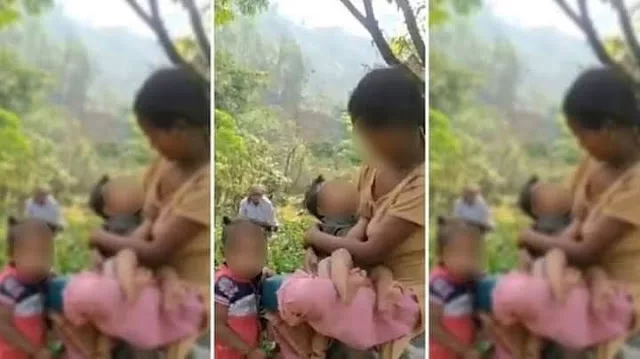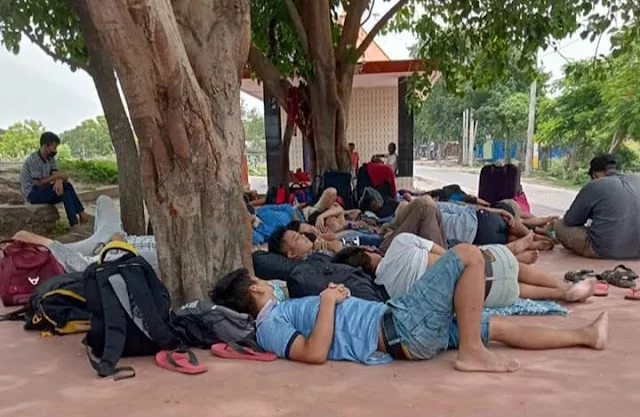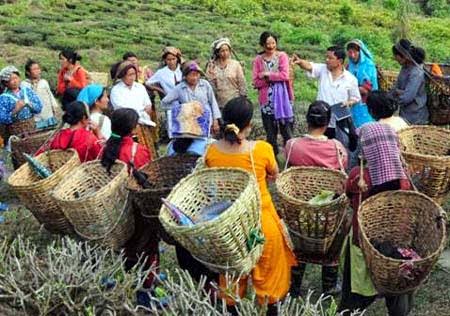AM I FROM NEPAL ? मैले तीनपल्ट सोधें गोवामा… “POET SUBASH RAI SOTANG FROM NEPAL” भनेर मलाई दुइपल्ट भनिएपछि मैले “AM I FROM NEPAL? “ भनेर तीनपल्ट सोधें गोवामा | साहित्य अकादमीद्वारा पणजीको कला अकादमी सम्मेलन कक्षमा सम्पन्न भएको ‘Symposium On Contemporary North-East Indian Literature and Poet Meet’ कार्यक्रममा म पनि Indian Nepali Poet को […]
Why I Am Not Bothering to Buy Stuffs From Racist Flipkart Anymore
Writes: Jashoda Chettri I am not much of a couch potato. So it was only natural that I missed the Flipkart advertisement on the telly few days back. The advertisement was racist claimed a friend who sounded upset and hurt. The Flipkart advertisement featured a kid depicted as achowkidar, wearing thebhadgaule topi with thekhukuri insignia, […]
The Sishnu Chronicles – An Ode to 90s Parents and Teachers
Writes: Bal Krishna Growing up in Darjeeling today is very different than how we grew up. Today parents believe in raising their children in an environment so protected that even when they are wrong, they take a stand to protect them, and instead shift the blame on others. We didn’t have that luxury. Our parents […]
SOME STRAY THOUGHTS ON – BIPUL’S SKETCHES OF DARJEELING
Writes: Prabin Moktan Back in 1998 I had accompanied a talented group of Higher Secondary boys from St. Augustine’s to Mount Hermon for the ISC Fest. Representing SAS in the solo song category of the Western Music Competition was Bipul Chettri, then a slightly intense, almost brooding musician, respected immensely by his cohorts for his […]
Of Roti, Matar, Alu Dum, Kofta, Bun, Puri, Pakora and More
Writes: Bal Krishna Nostalgia can hit in many different forms, at times it’s a song, at times a smell, may be a restaurant, or a even a bar… this pic brought back flood of memories from my childhood days, and I am sure many here must have shared similar experiences as me. Back in the […]
Darjeeling Zoo to receive snow leopard from Britain
The Padmaja Naidu Himalayan Zoological Park (PNHZP) in Darjeeling West Bengal will receive a two year old snow leopard as a part of an international breeding programme. Makalu born at the Black Country zoo in Britain will arrive from DZG on Friday at Kolkata airport and then will be taken to the Darjeeling zoo for […]
Most Common Habits That Damage Your Kidneys
Kidneys are one of the vital body organs, as their function is to eliminate waste and toxins from the body through the urine. Thus, they regulate the levels of minerals, such as calcium, and phosphate. Additionally, kidneys regulate blood pressure as they produce essential hormones which are necessary for this function, as well as for […]
Sushila Sonar’s low cost electric Wheelchair
Writes Sanjog Chamling 23rd June 2016 Arunachal Pradesh: Sushila Sonar, an Indian Gorkha, who recently won Gold for India in the International Taekwondo Championship held at Bhutan (Read here – Gorkhas Daughter wins Gold and Bronze in International Taekwondo Championship ) has given us yet another reason to be proud. Sushila, a student of BSc Interior […]
Of Titaura and Kateko Suntala: School Days in Darjeeling
Writes: Bicky Sharma Recently, during my stay in the plains, I would go around for a walk in the morning after waking up. What I would see were students waiting for their school bus on the side of the road, with a certain gloomy texture on their faces (obviously, my mornings would start late enough). […]
“Endangered Species: The Darjeelingay Spirit”- A Confused man’s perspective
Writes: Diwas Chettri For the past few years we have come across articles in Newspapers and Social Media as to wether we are a Gorkha or a Nepali, people giving controversial statements as well. Being a confused citizen I too often wonder wether I am a Gorkha or a Nepali, and What about the other […]
Chirag Rai first Indian Gorkha to take part in British Stunt Championship
Writes Milan Pradhan: Chirag Rai also known as Todo from Mirik Darjeeling will be the first Indian Gorkha to take part in British Stunt Championship. When Chirag was in India we (Chirag and Milan Pradhan) had done many shows together. He is now in London and owns Kawasaki 636, away from India his passion for stunts […]
Mothers and Her Gender: A Pledge to Renew
Writes Animesh Rai European Sociologist Robert Briffault in his three volume book “The Mothers” claims that in the early phase of human civilisation the institution of family was constituted by only a woman and her children. Human race was characterised by social promiscuity and marriage as an institution did not exist. The matured males were […]
A FICTION: The Day CM Wore Sikkimese-Nepali Topi
Writes: Amir Gurung “घाम चर्को लाग्दैछ… its getting hotter by the day”, mutters the village tailor in some far flung village of Sikkim. Nearby his son is meddling on the Android phone not paying much attention to what his father has just said. They are generations apart. The boy seems to be engrossed in the […]
Gham Chhaya – Golden Times by Lt Gen (Veteran) Shakti Gurung & Mrs Madhu Gurung
Writes Lt Gen (Veteran) Shakti Gurung and Mrs. Madhu Gurung What makes us take different roads at varying points in our lives – the choices we make in pursuance of a dream that starts as a mere idea, to become a journey of possibilities can never be fully answered. So great is the pull of […]
Priyanka Ella Lorena Lama to host an exhibition on April 20 – May 10
Priyanka Ella Lorena Lama (born 1991) is an Indian Gorkha fashion designer from Darjeeling based in Bangalore. She launched her debut Prêt collection under the label “P.E.L.L.A” – also an acronym for her name, at Lakme Fashion Week Summer/Resort 2015 as a Gen Next Designer. For many years, there was a clear boundary between fashion […]
A Tale of two stories: Finding Suraj Subba and losing Tirtha Tamang from Sikkim
Writes: Dinesh Sharma SURAJ SUBBA, FOUND on 28-03-2016 (Delhi): Rajen Chhetry, Delhi Police for North East representative and a Gorkha Youth activist received a phone call from another DPNE representative from Manipur, Timothy Chongthu. Timothy informed Rajen about a youth from Sikkim found sleeping in a Park at Munirka, South of Delhi. Rajen Chhetry and […]
To Vote For a “Brighter Future,” When All The Choices You Have Are “Dark”
Writes: Bicky Sharma “Dinu, uth na aabo. Vote haalnu jaadainas? Aaile duiso feri bhir huncha.” – shouts Dinu’s mom, to which Dinu replies “Jaadai garnu tapai, aaile keta haru sita awchu.” She then leaves for the polling booth, reminding him again to make it fast. Dinu is a young guy. Just 19 years of age, […]
Rueben Memorial School: A Non-Profit Minority Educational Institution Celebrated Its Silver Jubilee.
On 1st April 2016 , Rueben Memorial School (RMS), the first english Nursery school of Chongtong Tea Estate celebrated its 25th Foundation Day. The school was established in the loving memory of Late Rueben Singh Rai, who was an Assistant Manager of Chongtong tea estate till the early 1970’s. During his lifetime he had a […]





